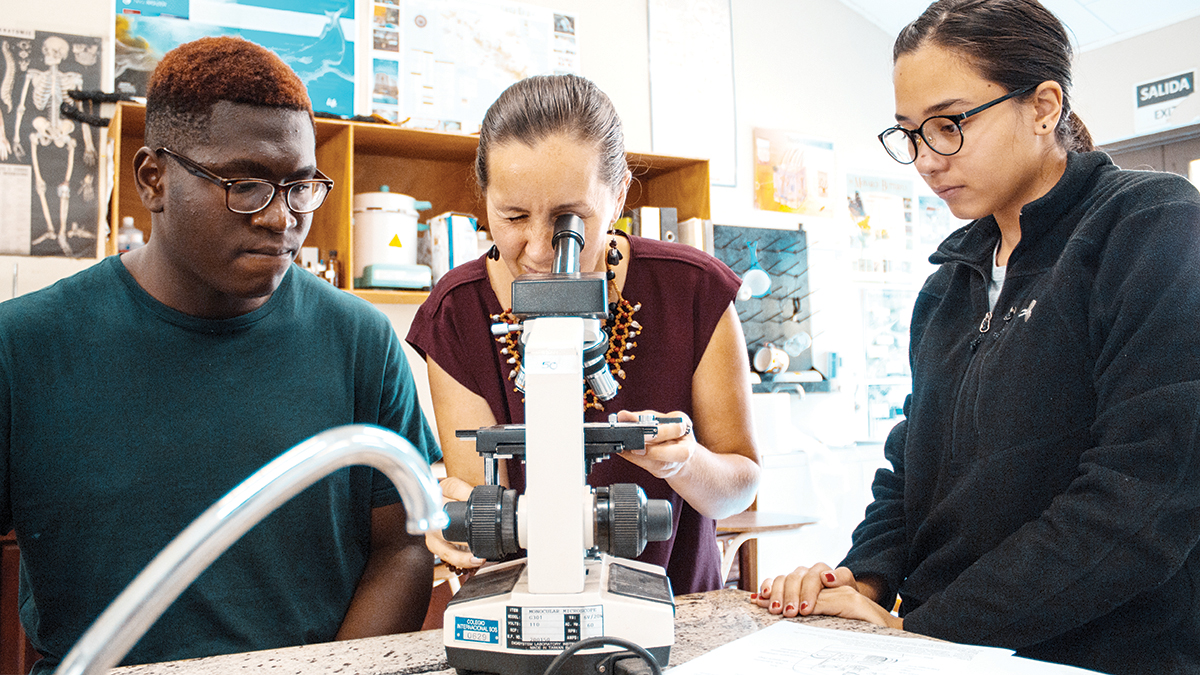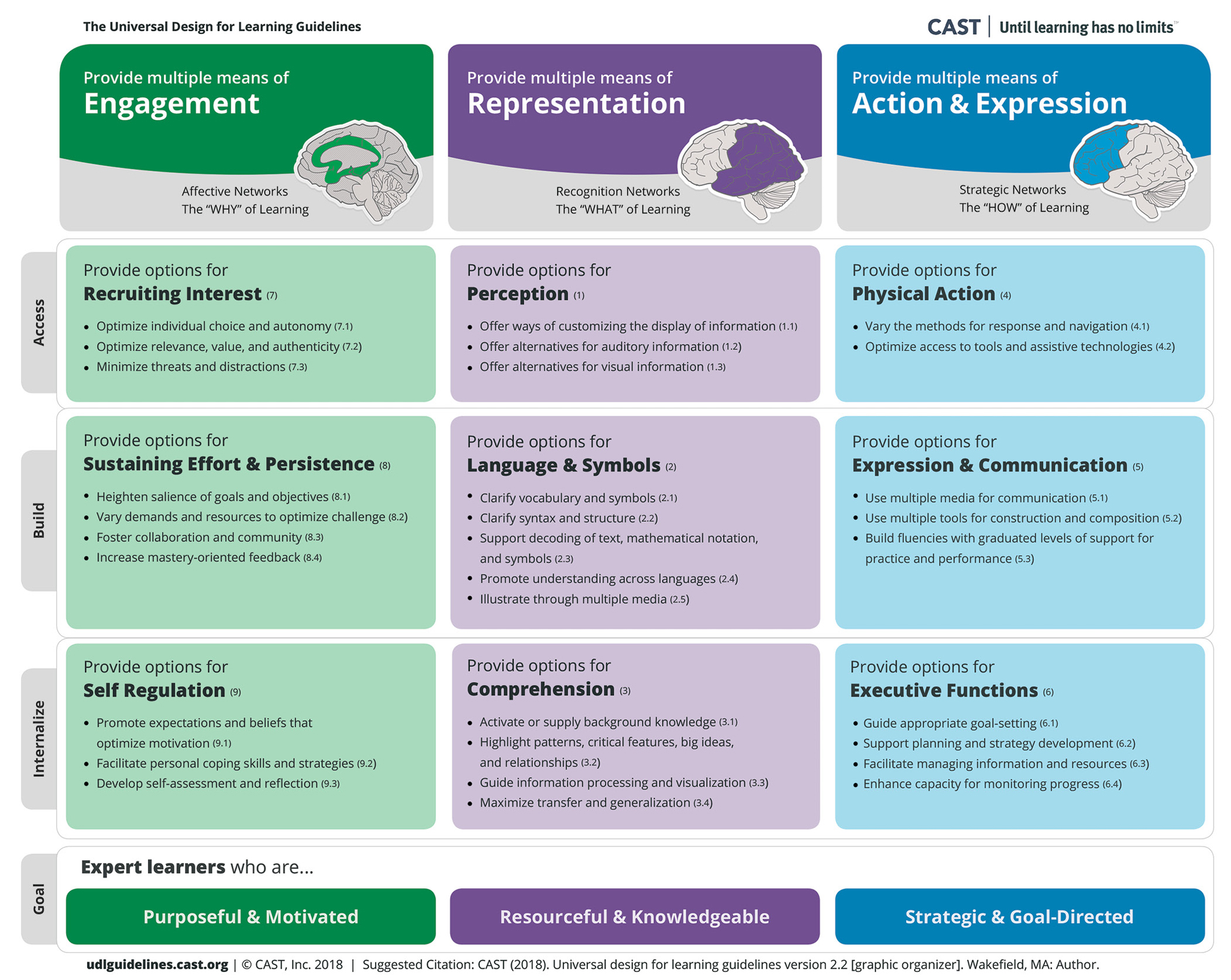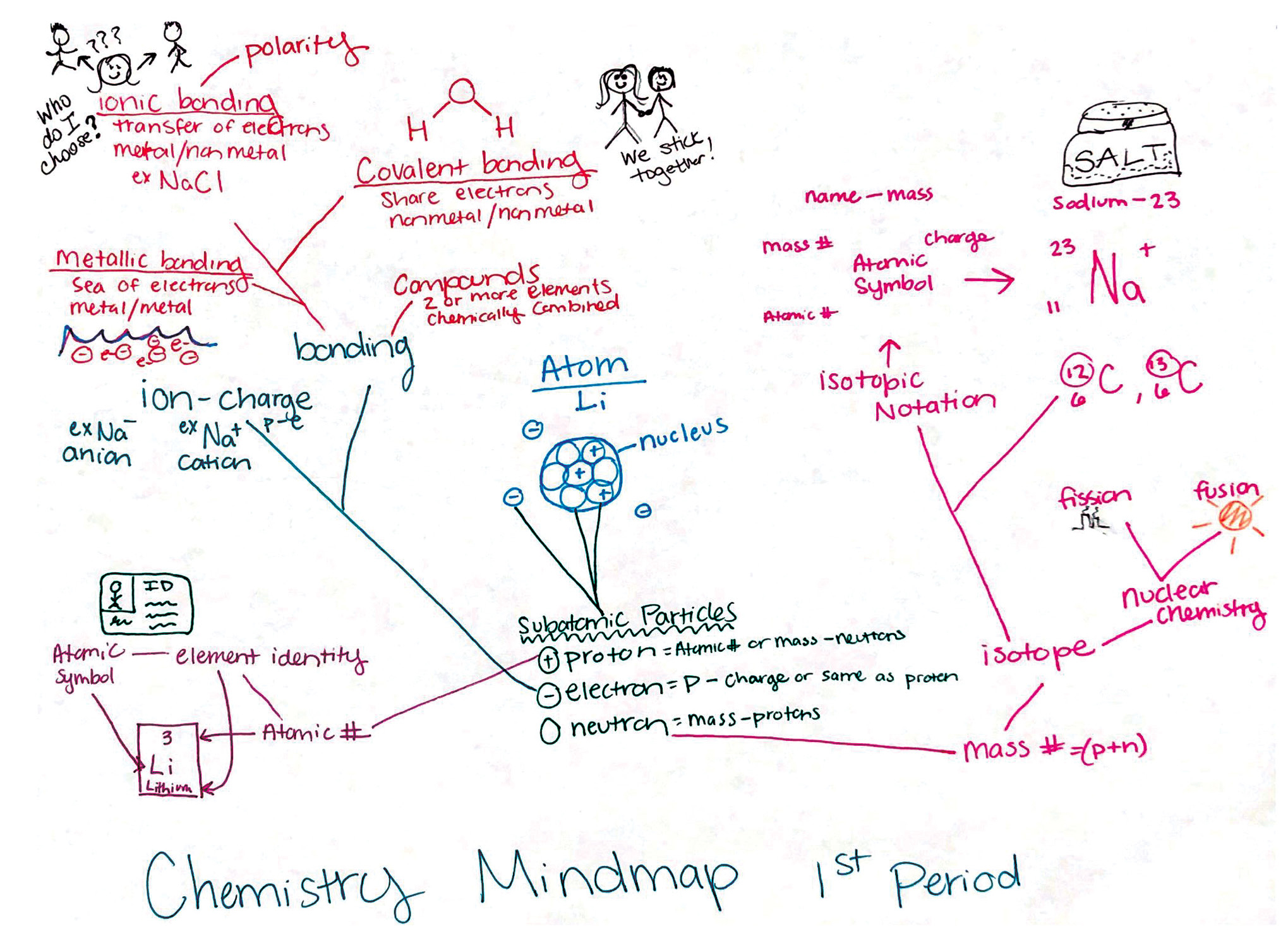feature
UDL Solutions for Common Science Barriers
The Science Teacher—July/August 2022 (Volume 89, Issue 6)
By Shalece Kohnke, Michelle S. Patterson, and Rebecca Moehlmann

A one-size-fits-all format for science instruction has resulted in frustration for science teachers who find an increasing lack of science literacy in students, as evidenced by low assessment scores (National Center for Education Statistics 2020) and common misconceptions in science. Beyond the classroom doors, this type of instruction produces a STEM workforce in which minorities, women, and people with disabilities (National Center for Science and Engineering Statistics 2021) continue to be underrepresented. Science teachers, understanding the value of integrating research-driven practices, adapt their science instruction to meet the needs of the diverse range of students. Universal Design for Learning (UDL) provides a framework, based in brain research, to design instruction around the needs of all learners. Specifically, UDL focuses on removing barriers to learning through three principles: Multiple Means of Engagement (the “why” of learning), Multiple Means of Representation (the “what” of learning), and Multiple Means of Expression (the “how” of learning) (CAST 2018).
By considering the UDL principles as we design science instruction, we proactively address how we engage students, how we make content accessible, and how we provide options for them to demonstrate learning. The UDL Guidelines (Figure 1) provide a visual representation of the UDL principles divided into guidelines, with specific checkpoints to guide instruction.

UDL graphic organizer.
We have identified common barriers faced by science educators: disengagement, relevancy, distraction, presentation, rigorous vocabulary, abstract concepts, complex relationships, labs, mastery, assessment, work quality, organization, and recall (CAST 2018; Marino et al. 2021). Table 1 (see Online Connections) provides a quick reference guide to the barriers to science instruction, corresponding UDL checkpoint, and strategies.
In the next section we introduce two high school science teachers, Mr. Lopez and Ms. Chen. Across several scenarios they will encounter the barriers and use UDL principles to find solutions. The following examples include hypothetical scenarios based on the experiences of the authors.
Multiple means of engagement
Mr. Lopez and Ms. Chen are at the copy machine during their planning period; the following conversation ensues:
Ms. Chen: “How’s it going?”
Mr. Lopez: “Honestly, it’s been tough. I just can’t get my students engaged. On the days when students are remote, I swear they are so distracted. Is that happening for you too?”
Ms. Chen: “Oh, I’ve dealt with that too. Do you want to know what worked for me?”
Mr. Lopez: “Absolutely!”
Ms. Chen: “Well, to get them interested, I started connecting lessons back to their own lives. I have been bringing in community partners through virtual meetings, and the students have been surprised by the range of potential science careers— from food science to firefighting to hair colorists.”
Mr. Lopez: “That’s a great idea. Do you have any others?”
Ms. Chen: I noticed my students were not engaged during the online presentation lectures. One of the science teachers I follow on social media showed how they used choice menus as part of their instruction. When I first used it, I started small and selected resources I had; I didn’t have time to reinvent the wheel. I gave students the option of selecting either reading the text, reviewing the recorded lesson online, or watching a video demonstration. I didn’t feel as if I was pulling teeth to get them to participate; I plan to add it to the days we are in-person.”
Mr. Lopez: “Maybe you can help me with this one. When I give students a video to watch, I am sure they are just leveling up on their games. How do you get your students to actually watch the videos?”
Ms. Chen: “Same! I use a free program, Edpuzzle, to build active-responding into videos, so they have to engage with the content before it will play the next section. When I use videos in-person, I give them guided notes, a fill-in-the-blank page based on the video content. I stop the video at least every 10 minutes, so we can discuss the information. When I made sure students had time to talk to a partner about the content, not only were they more engaged, understanding increased.”
In this scenario, our teacher designed instruction using the UDL principle Multiple Means of Engagement, knowing disengagement is a major barrier to learning. By making connections between science and careers, the teacher optimized relevance, value, and authenticity (Checkpoint 7.2). Providing a choice menu for instruction honored individual choice and authority (Checkpoint 7.1). Recognizing barriers are a risk to engaged learning, our teacher minimized distractions (Checkpoint 7.3) occurring during video lessons.
Multiple means of representation
Later that week, our teachers spoke during hall duty:
Mr. Lopez: “I have to tell you I tried your ideas and I’m seeing a difference. You wouldn’t want to help me with another struggle? My students aren’t grasping the vocabulary and the more abstract content.”
Ms. Chen: “I have a quick place to start. I had the same issue. I looked at my presentations and realized how text heavy they were. Balancing the text by adding images and linking to short videos showing vocabulary in action have helped students make connections within the content. I’m also making sure to use captions in my presentations and videos. At first, it was because I had a student with a hearing impairment, but I saw how many of the other students benefited. After the presentation, we practice our new vocabulary using Quizlet.”
Mr. Lopez: “That seems easy enough.”
Ms. Chen: “I also can’t say enough about how much simulations and manipulatives help my students.”
Mr. Lopez: “It’s high school; you use manipulatives?”
Ms. Chen: “Of course. It helps build on those abstract concepts. I’ll have to show you how we built isotopes, using beans, to represent subatomic particles. Knowing students struggle with the relationships between subatomic particles, nuclear chemistry, bonding, and element identity, I use mindmapping (see Image 2) to help students visualize these connections. Have you heard of that?”
Mr. Lopez: “Isn’t that when you draw pictures and make a web?”
Ms. Chen: “You got it. Instead of having students write out notes, I started to model taking notes visually by drawing the relationships. After guided practice my students are more independent. Abstract science concepts are often more easily learned through visual images than through text.”
Mr. Lopez: “Before you go, do you have any recommendations for lab work? Next week we are going to have labs, but they never seem to be done correctly no matter how simple.”
Ms. Chen: “You know, I was just asking for advice on that as well. Ms. Novak recommended implementing simulations prior to conducting the lab. She also sets up the lab sheet like a checklist and adds guiding questions or prompts that draw attention to a particular phenomenon.”
Mr. Lopez: “I’ll try that.” (Bell rings)
In scenario 2, our teachers considered the UDL principle Multiple Means of Representation to address the barriers in instruction. The foundation of this principle is accessibility. Content such as lectures may be difficult to understand; captioning offers alternatives for auditory information (Checkpoint 1.2). Rigorous science vocabulary was illustrated through multiple media, such as images and video links (Checkpoint 2.5). At the high school level, science concepts are increasingly abstract, requiring educators to help students highlight critical features and big ideas as well as make connections with the relationships within the content (Checkpoint 3.2). Metacognitive strategies such as mindmapping and the use of immersive virtual/augmented reality bring abstract concepts to life. To support students in lab completion, educators can incorporate information processing and visualization (Checkpoint 3.3) reducing confusion and reinforcing key concepts. Addressing these checkpoints are key to mastering crosscutting concepts and disciplinary core ideas of NGSS.

Chemistry mindmap.
Multiple means of action and expression
Last, Ms. Chen pops into Mr. Lopez’s classroom at the end of the day:
Ms. Chen: “Hey, I haven’t seen you in a while. How’s it going?”
Mr. Lopez: “Great! After your suggestions, I looked into UDL. I wanted to address some of the barriers my students have demonstrating their understanding. Since you’re here, let me show you what I’ve planned.
We’ve been working on balancing equations, an abstract task, which can be difficult to do independently. I’ve decided to provide three pathways for all students, with different levels of support. Students can choose to balance the elements and polyatomic ions through mathematical equations, PhET simulations and physical manipulatives.
Ms. Chen: My students also master content at their own pace.
Mr. Lopez: I know! After seeing how offering choices for instruction took off, I decided to try the same for assessments. In our stoichiometry module I’ve created a choice board of recipes (s’mores, pancakes, hot chocolate) for students to demonstrate their understanding of limiting reactants. Students could either present live in class or create a video using Flipgrid.”
Ms. Chen: “That is interesting. I have been giving different assignments to students for differentiation, but I never thought of giving options to the whole class.”
Mr. Lopez: “Exactly! Instead of making the decision for my students, each student gets to decide. Previously, students would submit incomplete, poor-quality responses. I provide and review a rubric (see Appendix A), and students demonstrate their understanding regardless of the format they select.”
Ms. Chen: “I’ll have to try that. Do you have any ideas for notetaking? Students either don’t write anything down or focus so much on writing they don’t learn anything.”
Mr. Lopez: “I know what you mean. Students need a way to organize the information from notes in order to recall it later. Now I give Cloze [fill-in-the-blank] notes with key points missing; the corresponding points are highlighted in the presentation. That way, they focus on what matters most. Additionally, key questions are built into the slides to help them refer to later. My students also struggled to make sense of written notes, so we started using sketchnoting, where I draw out concepts for them and they replicate those in their notebooks. Students are able to explain key concepts in a way they weren’t able to before.”
In the final scenario, our teachers address the UDL principle Multiple Means of Action and Expression. Barriers create an obstacle for students to demonstrate mastery of the standards. First, the challenges of having students demonstrate mastery at different rates, such as balancing equations, can be addressed by providing graduated levels of support and self-check points to monitor their own learning (Checkpoint 5.3). When students check their own learning, they can see how the problem is really worked out, incorporate those ideas immediately in the next problem and have reduced practice. Additionally, students who struggle with reading and writing may not accurately demonstrate their understanding on traditional assessments such as multiple choice or paper transfer tasks. Using multiple media for communication (Checkpoint 5.1) such as video recording (Flipgrid) provides an option for students to demonstrate what they know. Providing students with choice menus empowers them to decide which option is best for them, as experts about themselves as learners; rubrics set expectations for monitoring progress (Checkpoint 6.4). Furthermore, the abstract nature of science, compounded with the struggles of writing can be a challenge for students. The use of Cloze notes and sketchnotes facilitate managing information and resources (Checkpoint 6.3) without stigmatizing students for using different options and helps the entire class with note-taking skills. Learners differ in the amount of support needed for strategy, practice, and organization; providing options for action and expression is vital to achieving mastery.
Our teachers, Mr. Lopez and Ms. Chen addressed the barriers in their classrooms by incorporating UDL principles into their instructional design. Through revisions to instruction, their students demonstrated fewer misconceptions, increased persistence and achievement, and improved attitudes toward science. As science educators, we share a common goal to increase science literacy and address the issues of underrepresentation in STEM careers; UDL makes science accessible for all. The provided reference guide, Table 1 (see Online Connections) provides instructional strategies and resources to address common barriers in science instruction, organized by UDL principle, and the corresponding UDL checkpoint. This reference, in conjunction with the UDL guidelines, supports science educators to meet these goals. ■
Online Connections
Table 1. UDL Solutions for Science Reference Guide: https://bit.ly/3NCekuY
Appendix A. Stoichiometry/Limiting Reactants Lab: https://bit.ly/38PxWgf
Shalece Kohnke (Shalece.Kohnke@ucf.edu) is a PhD student in exceptional education at the University of Central Florida and is a 2022 DRK-12 (Discovery Research PreK–13) U.S. National Science Foundation CADRE Fellow. Michelle S. Patterson, NBCT, is a PhD student in exceptional education at the University of Central Florida. Rebecca Moehlmann, NBCT, is an inclusive biology and chemistry teacher at Oldham County High School, La Grange, KY.
Disabilities English Language Learners Equity Inclusion Lesson Plans Pedagogy Teaching Strategies Technology


